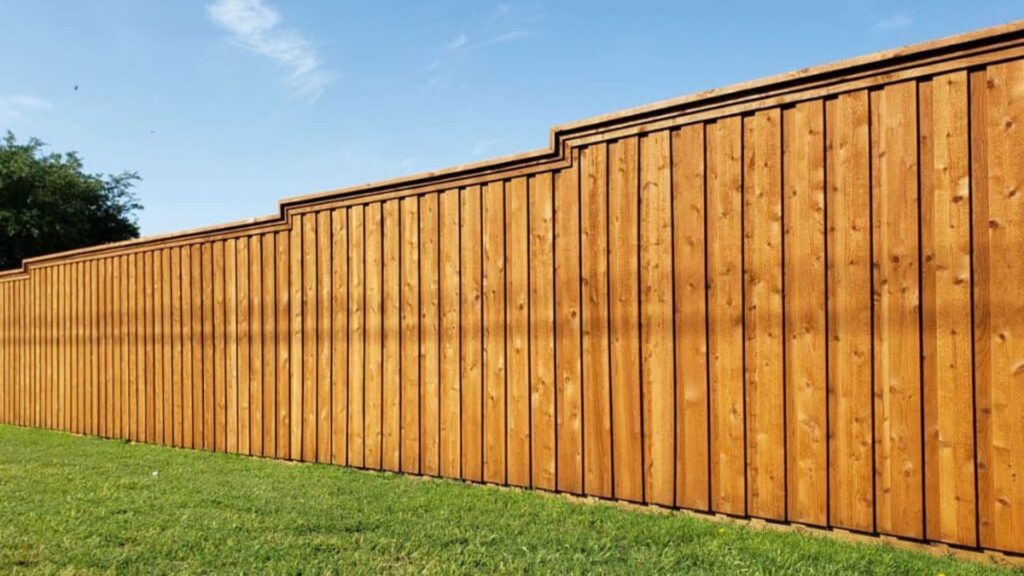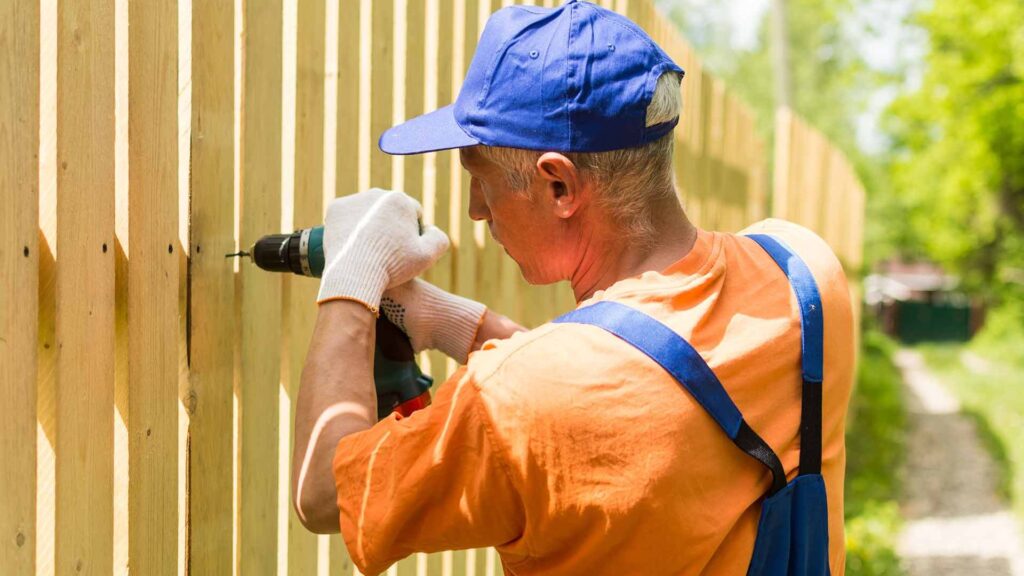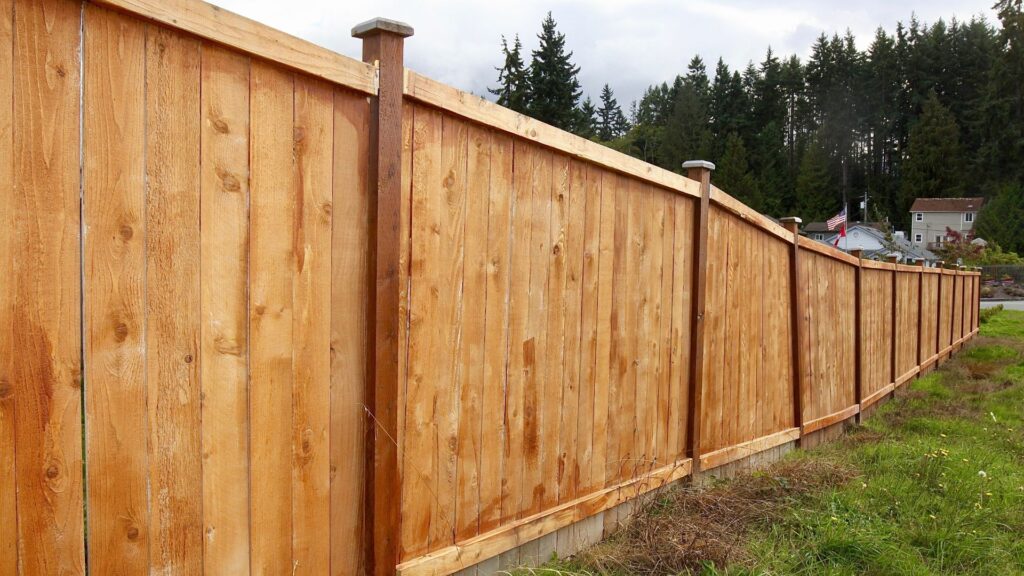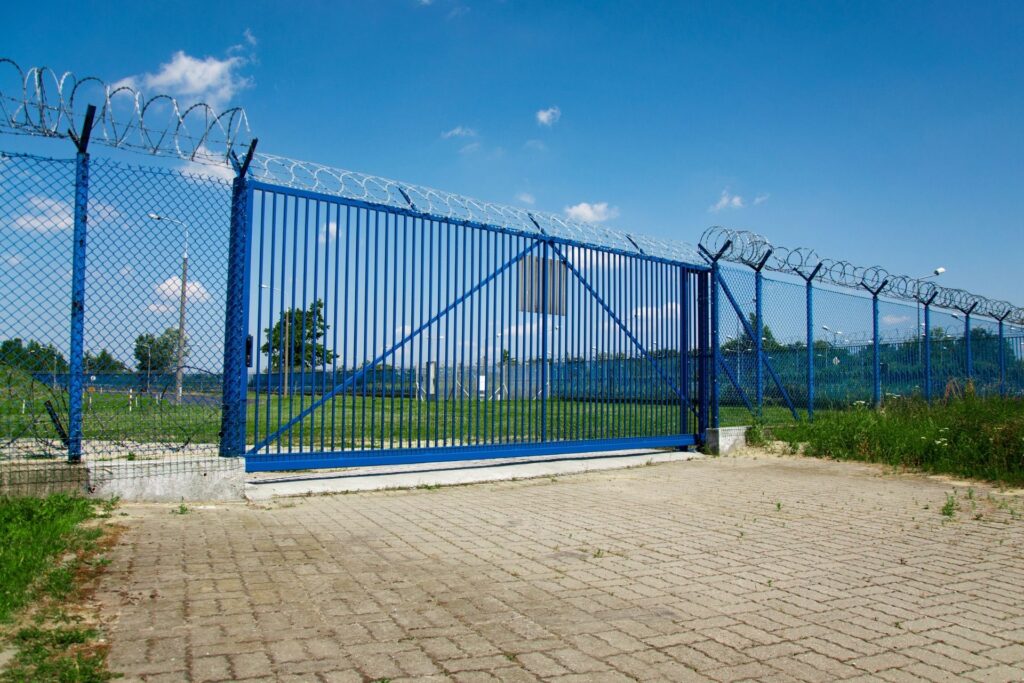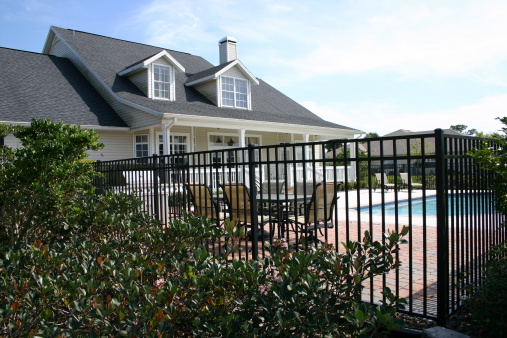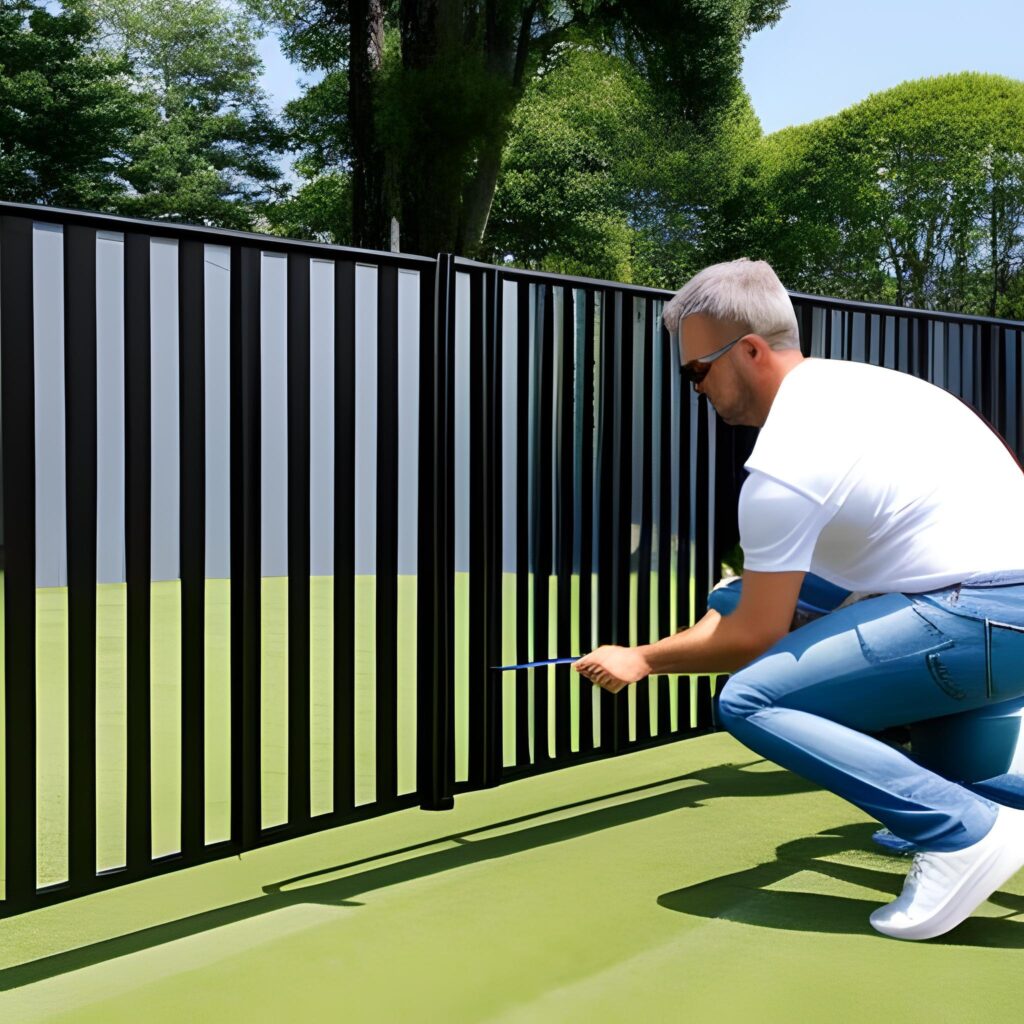Welcome to the ultimate guide on determining the ideal number of gates for your fence, tailored for New Zealand homeowners. Fences serve as the silent guardians of our homes, offering security, privacy, and a touch of aesthetic appeal to our properties. But when it comes to gates, many homeowners find themselves at a crossroads, unsure of how many they really need. Whether you’re installing a new fence or thinking of upgrading your existing one, the number of gates you incorporate is crucial for balancing accessibility with security and design. In this comprehensive guide, we’ll navigate the ins and outs of fence planning in New Zealand, from understanding local fencing norms to assessing your property’s specific needs. Our aim is to provide you with the knowledge and tools to make an informed decision about the number of gates that will best suit your home, enhancing both its functionality and curb appeal. So, let’s dive in and explore how to achieve that perfect blend of practicality and style for your fencing project all in one seamless narrative designed to guide you every step of the way.
When deciding how many gates your fence should have in New Zealand, consider property size, security needs, accessibility, and aesthetics. Generally, a residential fence might need at least one pedestrian gate for foot traffic and a driveway gate for vehicles. Additional gates may be required for larger properties or specific needs like service access or emergency exits. Legal regulations and neighborhood guidelines should also be considered. Balancing functionality with design and security is key to determining the optimal number of gates for your home.
- Understanding The Basics Of Fencing In New Zealand
- Factors Influencing The Number Of Gates
- Types Of Gates And Their Purposes
- Determining The Optimal Number Of Gates For Your Home
- Planning And Installation Tips
- Common Mistakes To Avoid
- Additional Resources
- FAQs: How Many Gates Should A Fence Have?
- Conclusion
Understanding The Basics Of Fencing In New Zealand
Fencing in New Zealand is not just about marking the boundary of your property; it’s a blend of legal requirements, personal preferences, and community expectations. Whether you’re in Auckland’s urban heart or the rolling hills of Canterbury, understanding the fencing norms is essential for every homeowner.
Legal Framework and Common Practices
In New Zealand, the Fencing Act 1978 lays down the law regarding fences between adjoining properties. This act is a guide for homeowners on everything from the costs involved in building or repairing a fence to the types of fences allowed. But it’s not just about legislation; it’s about living harmoniously within a community. The act encourages neighbors to communicate and make joint decisions on fencing, ensuring both parties’ needs and preferences are considered.
In residential areas, the trend leans towards aesthetically pleasing yet functional fences. Timber, wrought iron, and modern composite materials are popular choices, offering durability, privacy, and style. These materials not only comply with legal standards but also cater to the homeowners’ desire for an attractive perimeter that enhances their property’s value and appeal.
The Integral Role of Gates in Fencing Systems
Gates are more than just entry points; they are a critical component of a property’s fencing system, serving several key purposes:
Security: First and foremost, gates provide security. They act as a barrier, deterring unauthorized access and protecting your home and loved ones. With advancements in technology, options now range from manual locks to automated gate systems, offering varying levels of security based on homeowners’ needs.
Access: Gates facilitate access to and from a property. They are designed to be welcoming to guests while ensuring that only permitted individuals can enter. The design, location, and operation of gates (manual or automatic) play a significant role in how access is managed.
Aesthetics: Gates significantly contribute to a property’s overall appearance and curb appeal. From the grandeur of ornate wrought iron to the rustic charm of timber, the design of a gate can complement the architectural style of the home and create a lasting first impression.
Integration with Technology: Modern gates often integrate with home security systems, offering features like remote access, surveillance, and intercoms. This not only enhances security but also adds convenience and functionality to the fencing system.
In conclusion, understanding the basics of fencing in New Zealand, from legal requirements to the multifaceted role of gates, is crucial for homeowners. Fencing is not just a practical aspect of home ownership but an opportunity to enhance security, accessibility, and aesthetics. Whether you’re installing a new fence or updating an existing one, consider how your choices align with both the legal framework and your personal preferences, ensuring your property is both secure and inviting.
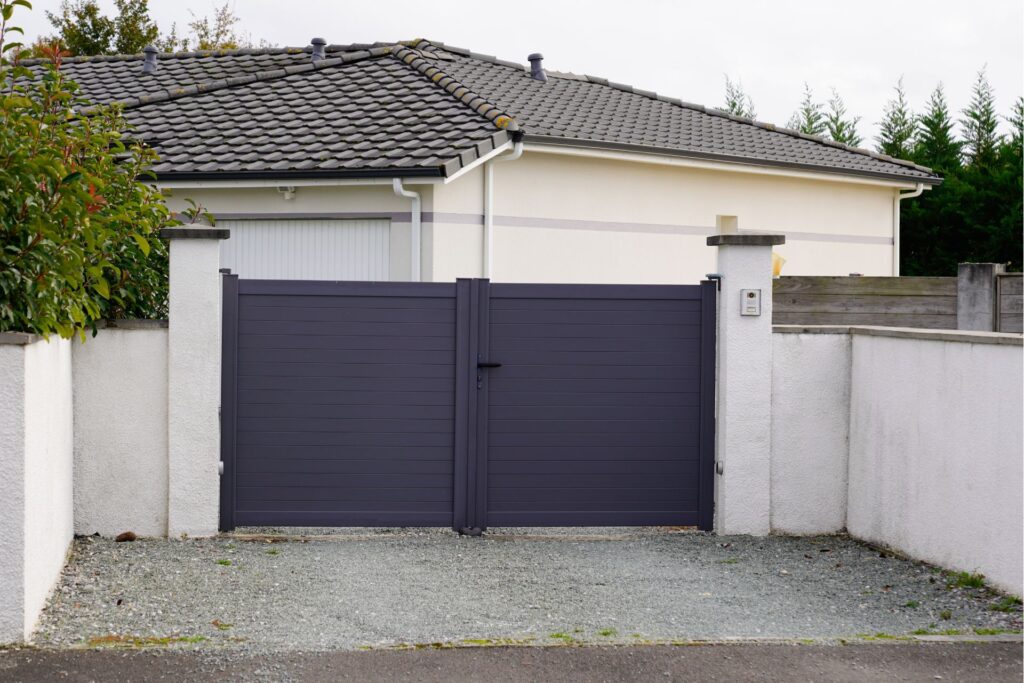
Factors Influencing The Number Of Gates
When planning the entrance and exit points of a property, understanding the factors that influence the number of gates is crucial. This decision is not merely about choosing a gate for the sake of security or aesthetics; it’s a comprehensive process that involves considering various aspects of the property and its surroundings. Let’s delve into these factors to ensure your property not only meets your needs but also aligns with local regulations and enhances its overall appeal.
Property Size and Layout
The size and shape of your property are primary considerations in determining the number of gates required. Larger properties might need multiple gates to ensure easy access to all areas, while smaller properties could be well-served by a single gate. The layout, including the driveway design and the positioning of buildings on the land, also plays a crucial role. A property with multiple access roads or a complex layout may benefit from additional gates to provide convenient entry and exit points.
Security Considerations
Security is a paramount concern for most property owners, directly influencing the number of gates installed. Multiple gates can offer enhanced security by controlling access points, but each additional gate also requires its own set of security measures, such as surveillance cameras and entry systems. Balancing the need for security with the practicality and cost of monitoring multiple gates is essential in deciding the right number for your property.
Accessibility and Convenience
Accessibility and convenience for homeowners, visitors, and service personnel are significant factors. Consider how people and vehicles move in and out of your property. Properties that host frequent visitors or large events may need additional gates to avoid congestion and ensure smooth traffic flow. Similarly, if your property accommodates service vehicles or deliveries, considering separate gates might improve efficiency and reduce disruptions to the main entrance.
Aesthetic and Design Preferences
The number of gates can also reflect a property owner’s aesthetic and design preferences. Some may opt for multiple gates to create a grand entrance or to enhance the property’s architectural design. However, it’s important to balance these desires with practicality, ensuring that additional gates do not clutter the property’s appearance or landscape design. A well-thought-out plan can seamlessly integrate gates into the overall aesthetic, complementing the property’s character.
Legal and Neighbourhood Guidelines
Before making any decisions, it’s crucial to be aware of local council regulations and neighborhood association rules that might affect your choice. Some areas have specific guidelines on the type of gates allowed, their dimensions, and even the number of entrance points a property can have. Ensuring compliance with these regulations can prevent potential legal issues and maintain harmony within the community.
In summary, determining the optimal number of gates for a property requires a balanced consideration of the property’s size and layout, security needs, accessibility and convenience for users, aesthetic preferences, and adherence to legal and neighborhood guidelines. By carefully evaluating these factors, property owners can make informed decisions that enhance the functionality, security, and beauty of their property. Always remember to consult with design professionals and local authorities to ensure that your gate setup is both effective and compliant with all relevant regulations.

Types Of Gates And Their Purposes
When discussing the variety of gates and their specific applications, it’s essential to delve into the details that not only enlighten homeowners and property developers but also offer practical advice that can be implemented to enhance the security, accessibility, and aesthetics of any premises. We explore the diverse types of gates available and their integral purposes, each designed to meet specific needs while seamlessly blending into the surrounding environment.
Pedestrian Gates: Key to Everyday Access
Pedestrian gates serve as the primary point of entry and exit for individuals on foot. These gates are crucial in guiding traffic flow smoothly and ensuring secure access to residential or commercial properties. Positioned ideally near walkways or pathways, pedestrian gates enhance the overall accessibility for residents or visitors. They often feature a design that complements the main entrance gate or the fence line, contributing to the property’s aesthetic appeal. Beyond functionality, these gates can be customized with various materials and designs, from classic wrought iron to contemporary aluminum options, offering both durability and style.
Driveway Gates: Securing Vehicle Access
Driveway gates are pivotal in controlling access for vehicles, ensuring security, and providing privacy for the property. The choice between single and double gates largely depends on the driveway’s size, the type of vehicles frequently accessing the property, and personal preferences regarding aesthetics and functionality. Single gates are suitable for narrower driveways and offer a compact, efficient solution. In contrast, double gates are ideal for wider entrances, allowing for the accommodation of larger vehicles and creating a more imposing and welcoming entrance. Driveway gates not only enhance security but also significantly contribute to the property’s curb appeal, potentially increasing its value.
Utility Gates: Ensuring Service Accessibility
Utility gates are specifically designed for areas of the property that require access for maintenance, garbage removal, and service deliveries. These gates are often situated away from the main entrance, providing discreet access to service areas without disrupting the property’s overall flow and aesthetics. Utility gates ensure that service personnel can perform their duties efficiently without compromising the property’s security or privacy. Their design is usually functional, focusing on durability and ease of access rather than decorative elements.
Emergency Access Gates: Vital for Safety
Emergency access gates are a critical component of any property’s security and safety infrastructure. These gates ensure that emergency services—such as fire, ambulance, and police—can gain entry to the property quickly in case of an emergency. Planning for emergency access is crucial during the design and installation of gates, with considerations for override mechanisms or specialized access codes that allow for swift entry when every second counts. Ensuring that these gates are clearly marked and unobstructed at all times is essential for the safety of residents and the property itself.
By understanding the types of gates and their specific purposes, property owners can make informed decisions that enhance both the functionality and aesthetic appeal of their property. Each type of gate serves a unique role, from facilitating daily access to ensuring safety and serviceability. Selecting the right gate requires considering various factors, including the property’s layout, security needs, and aesthetic preferences. Ultimately, the right combination of gates can significantly contribute to a property’s overall appeal, security, and functionality, making it a more welcoming and safe place for everyone.

Determining The Optimal Number Of Gates For Your Home
When it comes to enhancing the security, accessibility, and aesthetic appeal of your property, deciding on the optimal number of gates is a pivotal decision. This guide is designed to walk you through the key considerations and steps involved in making an informed choice that aligns with your property’s unique needs and characteristics.
Assessing Your Needs: Finding Your Property’s Perfect Match
The first step in determining the ideal number of gates for your home is a thorough assessment of your property’s access requirements. This process involves asking yourself several critical questions:
What is the size of your property? Larger properties might benefit from multiple gates to ensure easy access and efficient movement around the area.
What is the purpose of the gates? Are they primarily for security, aesthetics, or both? Understanding the primary function can guide the number and type of gates required.
How much traffic does your property experience? Properties with higher foot or vehicle traffic might need additional gates to manage access smoothly.
Are there specific areas within your property that require controlled access? This might include swimming pools, gardens, or storage areas, each potentially necessitating its own gate.
By reflecting on these questions, you can begin to form a clearer picture of your property’s specific gate requirements, setting the foundation for a more targeted consultation with professionals.
Professional Consultation: Leveraging Expert Insights
While self-assessment is crucial, consulting with a professional can provide you with insights and recommendations grounded in years of experience and industry knowledge. The benefits of professional consultation include:
Tailored Solutions: Professionals can offer customized gate solutions that perfectly match your property’s layout and your personal preferences.
Technical Expertise: They can advise on the best materials, designs, and security features, ensuring your gates are not just functional but also durable and secure.
Cost-Effectiveness: With a deep understanding of products and solutions, professionals can help you make cost-effective choices that avoid unnecessary expenses.
Engaging with a gate installation expert or a property security consultant can significantly enhance your decision-making process, ensuring that you choose the optimal number and types of gates for your home.
Case Studies: Real-World Examples to Guide Your Decision
Exploring case studies of different properties and their gate setups can provide valuable insights and inspiration for your gate strategy. Let’s look at a few examples:
Small Urban Home: A single, stylish gate at the front entrance might suffice, focusing on enhancing curb appeal while maintaining security.
Large Rural Property: Multiple gates might be necessary for such a property, including a main entrance gate for general access and additional gates for service entrances or specific areas like the garden or livestock pens.
Suburban Family Home: A main gate for vehicles and a smaller pedestrian gate can offer a balanced approach, ensuring convenience and security for both vehicle and foot traffic.
These examples highlight how different properties have unique needs and solutions when it comes to the number and types of gates. By considering similar case studies, you can gain insights into what might work best for your home, guided by the experiences of others.
Determining the optimal number of gates for your home is a crucial decision that can significantly impact your property’s security, functionality, and aesthetic appeal. By thoroughly assessing your needs, seeking professional consultation, and exploring real-world case studies, you can make an informed choice that perfectly aligns with your property’s characteristics and your personal preferences. Remember, the right gate setup not only enhances the security and accessibility of your home but also contributes to its overall charm and value.
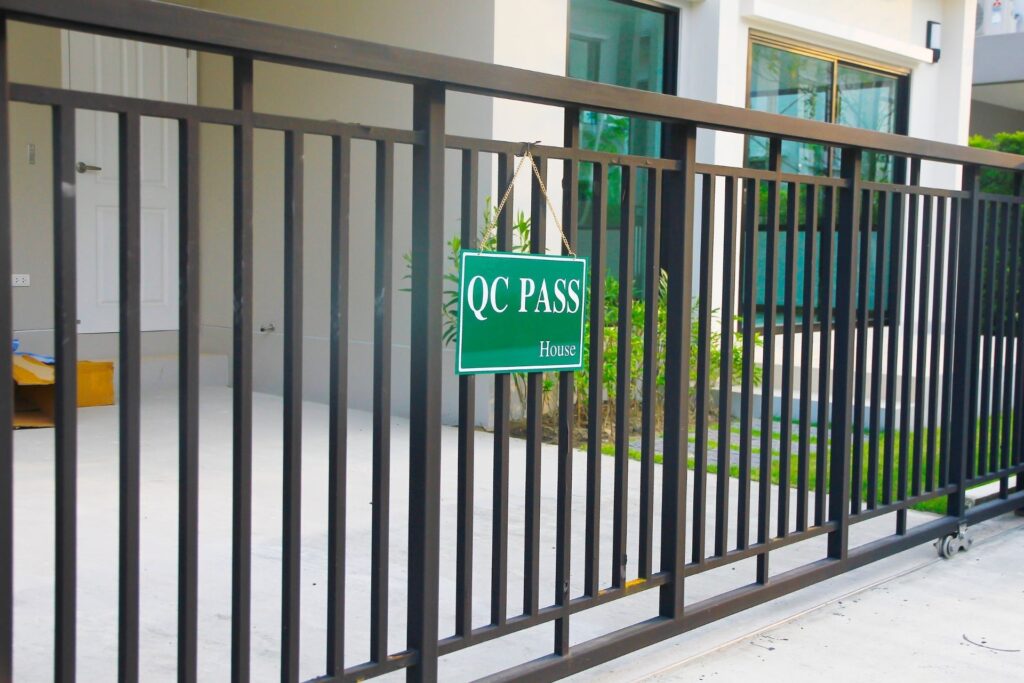
Planning And Installation Tips
When embarking on the journey of adding or upgrading gates to your property, it’s crucial to navigate through the planning and installation phases with a clear and informed strategy. Whether you’re aiming for enhanced security, increased property value, or simply aesthetic improvement, understanding the nuances of choosing the right material and design, deciding between DIY and professional installation, and recognizing maintenance considerations can significantly impact the success of your project. Here’s a comprehensive guide to help you make informed decisions along the way.
Choosing the Right Material and Design
The choice of material and design for your gate is not just about aesthetics; it’s about finding the perfect balance between functionality, durability, and harmony with your existing fence or landscape. Let’s explore some common materials and offer design tips:
Wood: Wood gates offer a classic and natural look, blending seamlessly with traditional and contemporary homes alike. However, they require regular maintenance to prevent rot, warping, and pest infestation.
Metal: Iron and aluminum gates are prized for their durability and security features. While iron gates are heavy and offer a timeless appeal, they can be prone to rust if not properly treated. Aluminum gates, on the other hand, are lightweight, rust-proof, and require minimal maintenance, but may not provide the same level of security as iron.
Vinyl: Vinyl gates are a low-maintenance, weather-resistant option. They’re easy to clean and won’t fade, crack, or rot. However, they may not offer the same robust feel or variety of designs as wood or metal gates.
Design Tips
- Ensure the design of your gate complements the style of your fence and the overall aesthetic of your property.
- Consider the functionality of your gate. For example, if privacy is a key concern, opt for a solid design rather than a see-through one.
- Don’t forget about the hardware! The right hinges, locks, and handles can not only enhance the look of your gate but also its functionality and security.
DIY vs. Professional Installation
Deciding whether to install your gate yourself or hire a professional comes down to a few critical considerations:
DIY Installation
- Ideal for those who have a good level of handiness and experience with home improvement projects.
- Can be more cost-effective, but it’s important to factor in the cost of tools and materials.
- Offers a sense of accomplishment and customization.
Professional Installation
- Recommended if the gate is heavy, complex to install, or if you’re looking for precise installation.
- Professionals can navigate unexpected issues more efficiently and often provide warranties on their work.
- While more costly upfront, it can save time and potentially avoid costly mistakes.
Maintenance Considerations
Ensuring the longevity and functionality of your gates requires regular maintenance. Here are a few tips:
Wood Gates: Periodically check for signs of rot, pests, and weather damage. Apply a fresh coat of paint or sealant every few years to protect against the elements.
Metal Gates: Inspect for rust spots, which should be promptly treated with a rust inhibitor and repainted. Lubricate hinges and locks regularly to ensure smooth operation.
Vinyl Gates: These require the least maintenance; simply wash with soap and water to keep them looking new.
By carefully selecting the right materials and designs, weighing the pros and cons of DIY versus professional installation, and adhering to regular maintenance practices, you can ensure your gates serve their purpose beautifully and efficiently for years to come. Whether you’re enhancing privacy, security, or curb appeal, thoughtful planning and execution are key to integrating the perfect gates into your property.

Common Mistakes To Avoid
Creating a seamless and functional gated entrance for a community or personal property is not just about enhancing security or adding a touch of sophistication. It involves careful planning and a thorough understanding of various factors to avoid common pitfalls that could lead to costly mistakes. Here, we delve into the “Common Mistakes to Avoid” when planning and implementing gated entrances, ensuring that your project runs smoothly and efficiently. By keeping these key considerations in mind, you can ensure the success of your gated entrance project while avoiding the common errors that many encounter.
Overlooking Legal Requirements
One of the most critical mistakes to avoid is the oversight of local legal requirements. Every region has its own set of rules and regulations governing the construction and implementation of gated entrances. These can include zoning laws, building codes, and specific requirements for public access. Ignoring these legal requirements can result in hefty fines, delays, and even the necessity to modify or dismantle the gates after they have been installed. Before embarking on your gated entrance project, it’s imperative to conduct thorough research or consult with a local expert to understand the legal landscape. This proactive approach not only ensures compliance but also prevents potential legal challenges that could impact your project timeline and budget.
Ignoring Privacy Concerns
Privacy is a paramount concern for many when installing gated entrances. However, a common mistake is either implementing too many gates or placing them inappropriately, which can inadvertently compromise privacy rather than enhance it. For instance, gates that are too high or too closely spaced can make residents feel enclosed or under surveillance, detracting from the sense of community and openness many desire. On the other hand, poorly placed gates can lead to unintended public viewing angles into private spaces. Striking the right balance requires thoughtful planning and consideration of the layout of your property and the surrounding area. It’s crucial to design a gated entrance that enhances privacy without making residents or visitors feel isolated or monitored.
Underestimating Budget
Another frequently encountered pitfall is underestimating the budget required for the number and type of gates desired. The cost of gated entrances can vary widely based on materials, designs, technology integration, and labor. A common misconception is that a simple gate will not significantly impact the overall budget. However, the addition of security features, customization, and compliance with legal standards can quickly inflate costs. It’s essential to have a realistic budget from the outset that accounts for all potential expenses, including unforeseen challenges that may arise during the project. This includes not only the initial installation costs but also long-term maintenance and potential upgrades. Consulting with professionals to get accurate estimates and planning for contingencies can help prevent financial surprises down the line.
By avoiding these common mistakes, you can ensure that your gated entrance project is successful, and compliant, and enhances the value and privacy of your property. Remember, careful planning, legal compliance, consideration for privacy, and realistic budgeting are the keys to avoiding pitfalls and achieving the desired outcome for your gated entrance.

Additional Resources
When it comes to enhancing the security and aesthetic appeal of your property in New Zealand, installing the right fencing and gates is crucial. However, the process involves more than just selecting the best materials and designs. Understanding local regulations, finding professional service providers, and accessing do-it-yourself (DIY) guides are essential steps. Let’s delve into the additional resources that will make your fencing project a success.
Local Council Resources: Navigating Regulations in New Zealand
One of the first steps in your fencing project should be to familiarize yourself with the specific regulations that apply in your area. New Zealand’s local councils have distinct rules concerning fence heights, styles, and materials to ensure safety and compliance with aesthetic standards. These regulations can vary significantly from one region to another.
To find the relevant information, start by visiting your local council’s official website. Most councils provide detailed guidelines on fencing regulations. This can include how close you can build to the boundary, the maximum allowed height without needing a permit, and any special considerations for heritage areas or zones with specific rules.
Professional Fencing Services: Finding Reputable Providers
While DIY projects can be rewarding, hiring a professional fencing service can save you time and ensure your fence is installed correctly and compliantly. When looking for a reputable fencing contractor, consider the following tips:
Check Reviews and References: Online reviews and testimonials can provide insight into the quality of work and customer service. Don’t hesitate to ask for references or examples of previous projects.
Verify Licenses and Insurance: Ensure the service provider has the necessary licenses to operate in your area. Liability insurance is also critical in case of accidents or damage during the installation process.
Get Multiple Quotes: Obtaining quotes from several contractors can help you understand the cost range and what is included in the service, allowing you to make an informed decision.
DIY Guides and Tutorials: Empowering Homeowners
For those who prefer to take on fencing projects themselves, there are plenty of resources available to guide you through the process. From selecting materials to the final installation, here are some pointers for accessing DIY guides and tutorials:
Online Platforms: Websites like YouTube and Pinterest are treasure troves of tutorials and project ideas. Look for guides created by experienced DIYers or professional contractors.
Hardware Stores: Many local hardware stores offer workshops or online guides that provide step-by-step instructions for fence installation.
Fencing Suppliers: Suppliers often provide installation guides for their products. These can be invaluable for ensuring you’re using materials correctly and efficiently.
Installing fencing and gates in New Zealand involves a blend of preparation, understanding local regulations, and choosing the right approach for your project. Whether you decide to hire professionals or undertake the project yourself, utilizing the resources will ensure your fencing installation is a smooth and successful process. Remember to start with your local council’s resources, seek out reputable professional services, and make use of the plethora of DIY guides available to bring your fencing vision to life.

FAQs: How Many Gates Should A Fence Have?
Conclusion
Wrapping up our exploration of the optimal number of gates for properties, it’s crucial to emphasize that the decision intertwines functionality, aesthetics, security, and legal compliance. Key takeaways highlight the importance of a seamless blend between practicality and visual appeal, ensuring robust security measures for each access point, adhering to local zoning laws and building codes, and recognizing that every property has unique needs. This decision is not one-size-fits-all; it necessitates a tailored approach that considers the specific characteristics and requirements of your property. We encourage a consultative route with professionals when uncertainty arises, aiming for a decision that not only meets functional demands but also enhances curb appeal, secures your premises, and complies with legal standards. Achieving harmony in these aspects is essential, turning your property into a testament to your priorities and lifestyle.
About the Author:
Mike Veail is a recognized digital marketing expert with over 6 years of experience in helping tradespeople and small businesses thrive online. A former quantity surveyor, Mike combines deep industry knowledge with hands-on expertise in SEO and Google Ads. His marketing strategies are tailored to the specific needs of the trades sector, helping businesses increase visibility and generate more leads through proven, ethical methods.
Mike has successfully partnered with numerous companies, establishing a track record of delivering measurable results. His work has been featured across various platforms that showcase his expertise in lead generation and online marketing for the trades sector.
Learn more about Mike's experience and services at https://theleadguy.online or follow him on social media:



